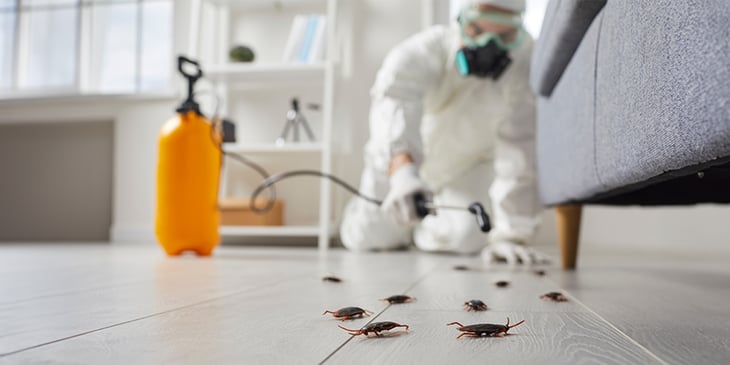Battling unwanted guests: How to avoid pests and vermin in your properties
No one wants to share their living space with uninvited guests, especially when it's pests or vermin! Dealing with infestations can be a headache for a property manager because this can be costly, time-consuming, and damaging to a property's reputation.
The Housing Health and Safety Rating System (HHSRS) covers this problem. The details of how legislation on pests and vermin control fits into the HHSRS can be found here.
But what if you could prevent these problems before they really start? From proactive inspections to tenant education, this is how to keep tenants safe and happy.

What is a pest?
- Any animal or insect that causes harm to humans, livestock, crops, or forestry.
- Any animal or insect that is considered a nuisance.
- Any animal or insect that infests food, fabric, or wood.
Examples include ants, fleas, lice, mosquitos, spiders, ticks, bed bugs, cockroaches, moths, and silverfish.
What is vermin?
- Any animal, insect, or parasitic worm that spreads disease, destroys crops, or kills livestock.
- Any small animal that is considered a pest because it is destructive or spreads disease.
Examples include cockroaches, mice, rats, fleas, worms, and raccoons.
Property inspections
Regular property inspections are the easiest way of identifying a problem early on. This makes prevention simple, as when signs are spotted early on, the lengths a property manager will have to go to get rid of pests or vermin will be smaller.
Kitchens are the most likely places for pests and vermin to live in a property. Utility rooms, basements, and attics can also be at risk of infiltration. The inspections should check for gnaw marks, droppings, and nesting materials.
Pest-proof the property
Take measures to prevent pests and vermin from infiltrating properties before they happen. Pest-proofing can involve as little as placing fly screens on windows or as much as installing bird spikes on ledges. This will mean that pests have fewer ways to access the property and will, therefore, reduce the likelihood of nesting.
Thoroughly inspecting the exterior of a property will help prevent pests from entering. From there, potential entry points, such as gaps around pipes, damaged windows, and doors without sweeps, can be sealed.
Communicate with and educate tenants
How a property manager handles pest and vermin issues with their tenants is essential. To push aside a complaint about a problem because it seems too inconsequential will only lead to further problems down the line as more pests enter the property. A property manager must respond promptly to prevent the infestation from worsening and causing further distress to the tenant.
Adding a pest prevention clause to the tenancy agreement can further outline these responsibilities and ensure tenants understand their role.
Taking the time to educate tenants could save a property manager from much hassle and wasted time in the future, plus save tenants from having to deal with pests. This information could include:
- Cleaning kitchens and bathrooms regularly.
- Keeping food in sealed containers.
- Immediately report any signs of pests or maintenance issues.
Educating tenants on proper waste management is also beneficial. Lack of waste management is one of the most significant causes of pest and vermin infestations. Waste disposal facilities must be accessible and safe, and rubbish must be stored in covered bins. Regular waste collection and proper disposal will also deter pests.
An assessment should be made to determine the best course of action as soon as possible. Occasionally, the solution could fall on the tenant. For example, if the issue is a single mouse in the property, the tenant may be encouraged to set up a mousetrap rather than calling in help for a larger infestation.
If the problem is larger, property managers should keep in touch with their tenants while an active solution is being sought to keep them informed of progress. To do this, explain the steps that will be taken and provide any guidance on prevention for the future. This will alleviate concern for the tenants involved.
Final thoughts
Pest and vermin infestations are a nightmare for landlords and tenants alike. By implementing these preventative measures, property managers can significantly reduce the risk of infestations and maintain a healthy and safe environment for tenants.
Prevention is always better than cure—after all, pests aren't going to pay the rent! A proactive approach to pest control will save time, money, and hassle in the long run.


